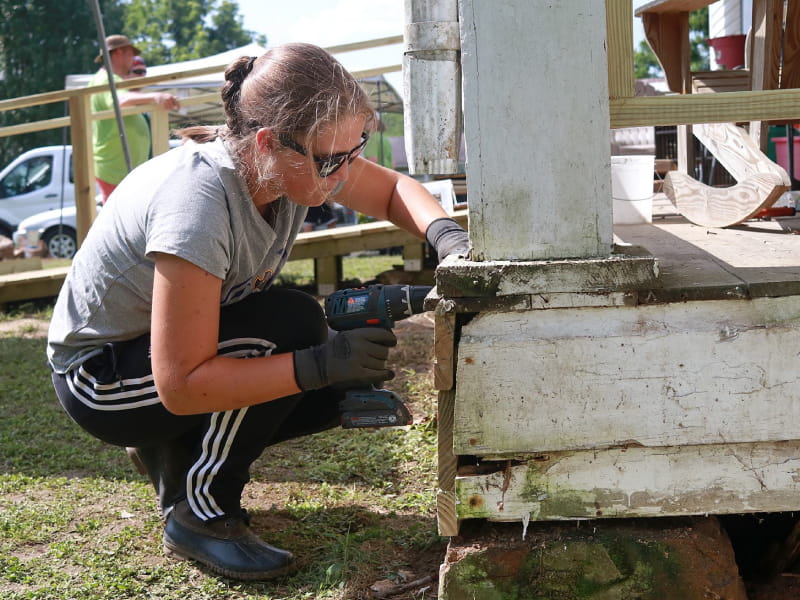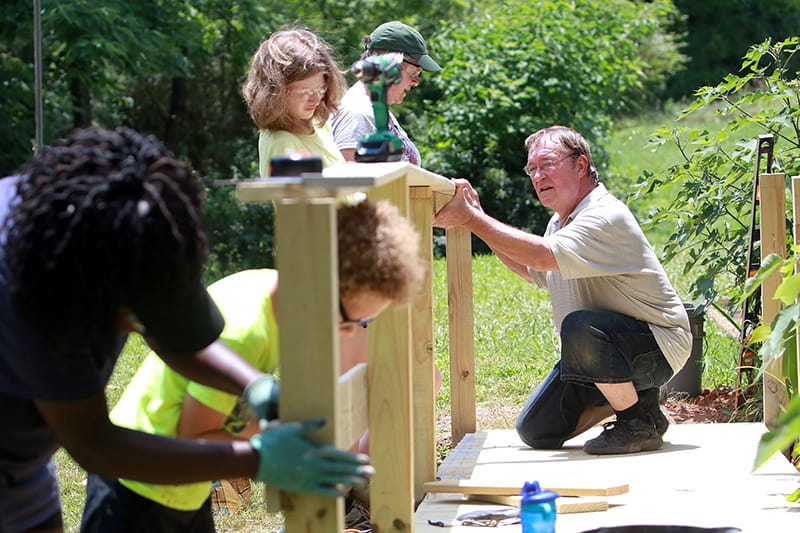Appalachia volunteers make homes safe, affordable – and healthy
By American Heart Association News

Replacing air filters, installing smoke detectors, weatherizing windows, repairing rotting floors. It's maintenance that can make a house healthier and safer and reduce utility costs.
Volunteers with the Hinton Rural Life Center in North Carolina are tackling these household tasks to help fellow residents in rural Appalachia who don't have the financial means or physical ability to keep up with home repairs.
"We really keyed in on the connection between poor health and poor housing," said Jacqueline Gottlieb, president and CEO of Hinton Center, a Christian retreat and conference center in the Smoky Mountains. The center uses revenue from its rentals and grants to fund a housing ministry. And since the pandemic, they've changed how they do their work – but not their core mission.
"Since COVID, we have implemented numerous health and safety factors and are opening up mission opportunities for families who are sheltering together," Gottlieb said.
The work is focused on Clay and Cherokee counties in western North Carolina and part of northern Georgia in addressing generational poverty. Ensuring homes are healthy, safe and affordable is a big part of that effort.
Poverty and health are part of a complex web. For example, when someone can't pay for additional garbage pickup or saves food for future use because of food insecurity, Gottlieb said it can create a fire hazard or an environment that attracts rodents.
When mold infiltrates a home, it can impact health by worsening asthma, which, in turn, can lead to higher medical bills. Or, a water leak around a toilet base can cause flooring to rot, necessitating a costly repair and possibly resulting in a debilitating accident if someone falls through the floor.
"We have many, many floors where we go in and you can see the grass" beneath the house, Gottlieb said. Showing a homeowner how to install an inexpensive toilet wax ring to seal the drainpipe can prevent leaks.
Volunteers use an extensive checklist and identify at least 25 homes for help each year. (The center reaches up to 200 houses a year with quicker checks.)
The checklist covers 44 items, including addressing asbestos, lead paint and air quality. It points out the need to have working smoke alarms, carbon monoxide detectors and fire extinguishers; a roof that keeps out moisture; clean furnace filters and dryer vents; exterior steps and decks in good working condition; clear pathways to exits; safe electrical outlets; adequate insulation; and energy-saving light bulbs.
Volunteers communicate with homeowners and educate them about the evaluations and repairs. Sometimes, experts are called in, such as when radon gas must be remediated.
Charlie Hoffman, 89, an Army veteran who helps other elderly or disabled people by driving them to doctors' visits, drug stores or on other errands, has received assistance himself from Hinton Center.
Volunteers replaced wooden beams beneath his deck where termites invaded and replaced and repainted his garage siding. They even planted new shrubbery, Hoffman said.
"Hinton does a lot of nice things for the older people," he said. "They did a lot for me."
Hoffman enjoyed getting to know the group of volunteers in their teens and early 20s who arrived by bus to work on his home. He later attended a farewell dinner for the out-of-town volunteers at the center and gave a speech thanking them. "The kids were great," he said. "They had a good time."
Hinton Center serves as a model for retreat guests who may volunteer locally while visiting, then take what they learned back to their communities.
Volunteers have built wheelchair ramps that allow a previously homebound person to become mobile and perhaps leave the house for the first time in years. Repairs have made houses suitable for children to continue living with their parents.

Helping drug-addicted residents locate treatment contributes to healthier, safer housing, too, because if substance abuse persists, a repaired home may end up wrecked again, Gottlieb said. One of the safe housing checklist items asks whether medicines are safely stored, thus preventing access by someone who shouldn't take them.
Hinton Center has been doing home repair for more than 50 years. In 2016 and 2017, it launched a study that transformed its home repair ministry to focus on larger issues of social determinants of health as they relate to housing. Along with housing, the center has task forces to examine transportation, technology, economic development, education, children's needs and substance abuse.
For its safe, healthy and affordable housing program, Hinton Center was a top contender among honorees for the American Heart Association's Empowered to Serve Business Accelerator, highlighting work promoting healthy living.
Hinton Center also operates several other ministries. It delivers firewood to residents who need it for heat but can't buy or gather it. Its garden ministry shares fresh vegetables locally.
The center has worked with local doctors and paramedics who refer patients to the center for services. It's working on a "mobile teaching unit," a truck to help with community education, and is participating in parades and community fairs and circulating information through billboards and news articles.
Its message is powerful, yet simple: "People should have a safe home," Gottlieb said. "That may help prolong their life."
If you have questions or comments about this story, please email [email protected].





